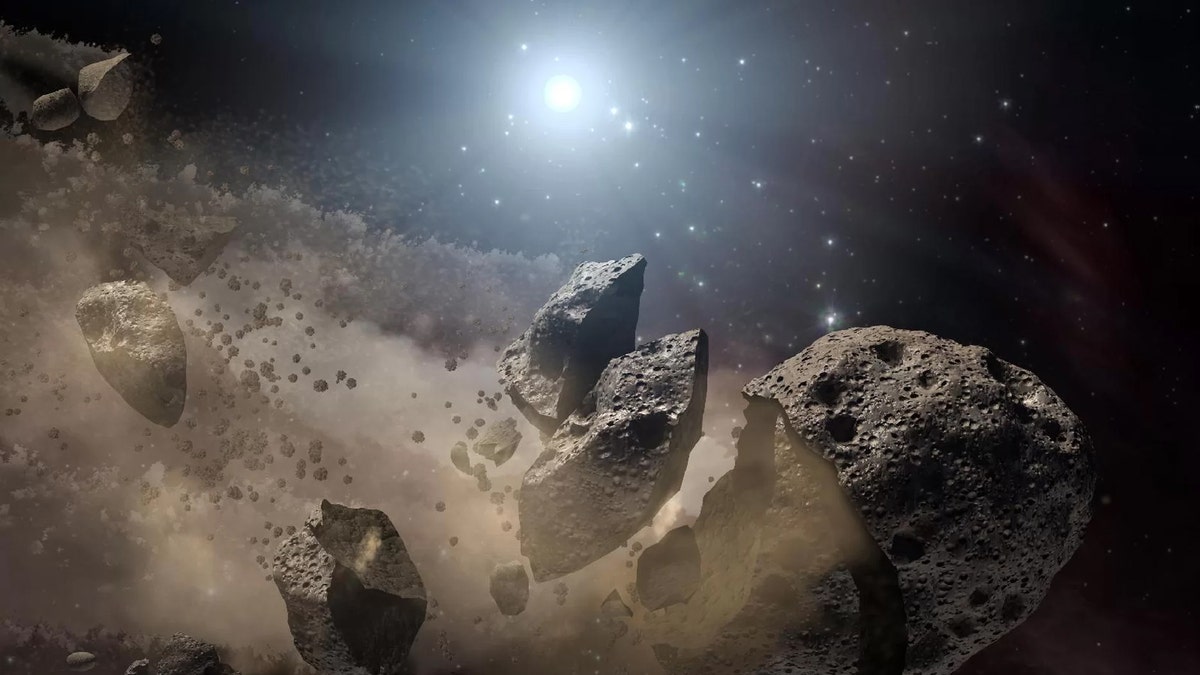
Researchers have found that a family of asteroids that dates back to the solar system's early days. Here is an artist's concept of a broken-up asteroid. The leftover building blocks of the solar system, called planetesimals, were similarly fragmented, and they drifted apart over time. (Credit: NASA/JPL-Caltech)
Forget cryptocurrency — the next big “gold rush” isn’t even on Earth.
Physicist Michio Kaku, writing in his new book “The Future of Humanity” (Doubleday), believes a bonanza is coming from mining asteroids, which he calls “flying gold mine[s] in outer space.”
NASA defines asteroids as “cosmic ‘leftovers’ from the solar system’s formation about 4.5 billion years ago,” with some containing iron, nickel, carbon, cobalt and other precious metals such as platinum, palladium, rhodium, ruthenium, iridium and osmium. These substances are all found on Earth but are rare and running out — making the search to replace them increasingly urgent.
Humanity stands to benefit massively from harnessing these rocks. One example — 3,000 feet across — was recently estimated to contain 90 million tons of platinum, worth around $5.4 trillion. A smaller asteroid — about 100 feet across — could contain materials worth between $25 billion and $50 billion on Earth.
There are about 16,000 asteroids labeled “near-Earth objects,” which means that their orbits cross Earth’s path, and astronomers have identified 12 nearby asteroids with the highest potential for mining.
Kaku predicts that asteroid mining will resemble a 19th century cattle supply chain, in which cattle was herded from the Wild West and sent to Chicago, where meat was processed and then sent off to other urban areas. “The moon would be like the Chicago of the future,” he writes, “processing valuable minerals from the asteroid belt for shipment back to Earth.”
There are three types of asteroids: “C-type,” “S-type” and “M-Type.” S-types contain high concentrations of metal, iron, nickel and cobalt but little water, while M-types are the most lucrative, boasting 10 times the amount of metal. (Asteroids usually remain in stable orbit in the asteroid belt, but when one breaks off into space and hits the Earth’s atmosphere, it burns up as a meteor — and often we can see them in the night sky as shooting stars.)
C-type asteroids — the most common type, making up 75 percent of asteroids — contain hydrated clay materials that can be mined for water in space. This water could then be turned into rocket propellant via a process called electrolysis, which might one day allow astronauts to refuel their crafts in space and explore even deeper into the cosmos.
With this much “gold” floating around the solar system, it’s no wonder Planetary Resources, a company backed by Google co-founder Larry Page and “Avatar” director James Cameron, promises it will send out exploratory spacecraft to collect data and asteroid samples by 2020.
NASA also jumped on the bandwagon by launching a $1 billion probe called OSIRIS-REx in 2016 to explore the 1,600-foot wide Bennu asteroid that will pass Earth in 2132. The probe will land, retrieve some rocks and return to Earth to help us figure out how much we stand to gain from space debris.
So how much of this “gold” is out there? If you put together all the masses of the solar system’s known asteroids, they would add up to just 4 percent of the mass of the moon. “However, the majority of these objects have not yet been detected by us, and there are potentially billions of them,” Kaku writes.
And while “small asteroids are much more numerous than large ones,” according to NASA, “even a little, house-sized asteroid should contain metals possibly worth millions of dollars” — enough to tempt any 21st century prospector into staking a claim.
Michio Kaku also writes about what aliens probably look like.
This story originally appeared in the New York Post.




















